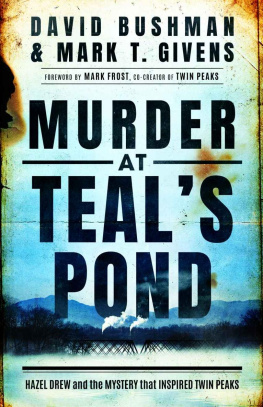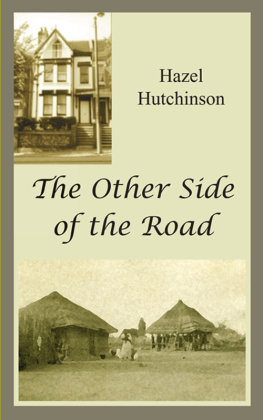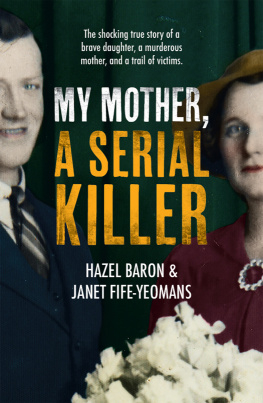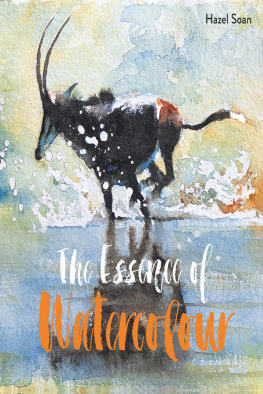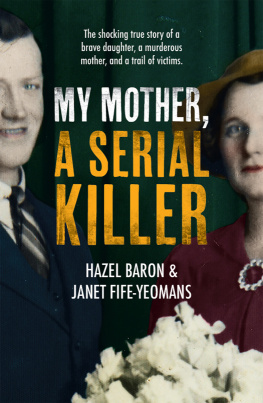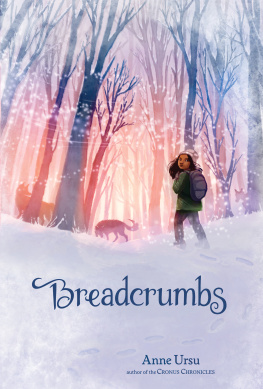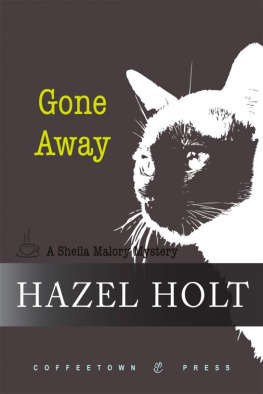
OTHER TITLES BY DAVID BUSHMAN
Conversations with Mark Frost: Twin Peaks, Hill Street Blues, and the Education of a Writer
Twin Peaks FAQ: All Thats Left to Know About a Place Both Wonderful and Strange
Buffy the Vampire Slayer FAQ: All Thats Left to Know About Sunnydales Slayer of Vampires, Demons, and Other Forces of Darkness

Text copyright 2022 by David Bushman and Mark T. Givens. Published by arrangement with Cinergistik Inc.
All rights reserved.
No part of this book may be reproduced, or stored in a retrieval system, or transmitted in any form or by any means, electronic, mechanical, photocopying, recording, or otherwise, without express written permission of the publisher.
Published by Thomas & Mercer, Seattle
www.apub.com
Amazon, the Amazon logo, and Thomas & Mercer are trademarks of Amazon.com, Inc., or its affiliates.
ISBN-13: 9781542026437 (hardcover)
ISBN-10: 1542026431 (hardcover)
ISBN-13: 9781542026420 (paperback)
ISBN-10: 1542026423 (paperback)
Cover design by Faceout Studio, Jeff Miller
First edition
For Betty Calhoun, storyteller.
CONTENTS
FOREWORD
Whats the first ghost story you remember? One that left marks, if not scars. That gripped you with the singular chill of mortality introducing itself.
Mine came by way of my maternal grandmotherone for whom the words colorful and strange dont begin to do justicea more than apt stand-in for the archetype of the crone, one of mythologys eternal guides to the underworld. The former head of the WPAs music division and a charter member of the OSS in London during WWII, Betty Lawson Calhoun was brilliant, complicated, and an inveterate fabulist.
Her family were city folks, her father an accomplished engineer and professor at Rensselaer Polytechnic Institute in Troy, New York, a then-thriving industrial hub just upriver from Albany. When the Spanish flu pandemic devastated the country in 1918, Thomas Lawson decided to move his wife and two young daughters to the country. On a rustic, rugged, heavily wooded plateau twenty miles to the southeast, near the shores of an idyllic, arrowheaded alpine lake, he bought a decaying eighteenth-century farmhouse. He transformed it into a substantial ten-room home, bought up most of the raw acreage around the shoreline, built roads and a windmill, selling lots or cabins to friends and colleagues, soon creating a lively, upper-middle-class summer retreat community.
Life for the fortunate families on the shores of that lake changed forever and for good. For the mountain folk surrounding them, whod been living in isolation on that plateau for seven generations, little changed. They worked for the newcomers but kept their distance, eking out a hardscrabble living from the land, logging, making charcoal and, during Prohibition, moonshine. Two different worlds.
Legends abounded. These mountain families, nine of them in particular, were said to be descendants of Hessian mercenaries, deserters from the British Army during the American Revolution, drawn to this area for its resemblance to their ancestral Black Forest. The one the Brothers Grimm made famous as the source of all thats sinister. A more local talent, Washington Irving, captured the same eerie mood of these Upstate woods, hills, and ponds, where the indifferent savagery of nature infected those who dared intrude and try to tame it. Whenever thunder rattled the panes, Betty always referenced the local lore; it was the sound of Rip van Winkles eerie Dutchmen, bowling ninepins in their mountain lair.
When we were youngsters, the locals were presented to us as peasants out of Russian literature: colorful, dim, loyal, with an edge of uncivilized danger. A more prosaic explanation, learned later, is that two centuries of deprivation, ignorance, intermarriage, alcoholism, madness, and incest yielded little but pain and tragedy. We heard constant whispers of terrible things that happened up the mountain and met many of these folks throughout childhood. A few chilled me to the bone; lets just say, when I later saw the movie, the locals in Deliverance seemed familiar to me.
So, to Bettys ghost story: two local laborers, hill folk, staggering back up the mountain after a payday pub crawl in towna weekly ritualencounter something uncanny.

Full moon. Clear, still night, early fall, with a whisper of winter in the air. As the men approach a small cow pond on the right, a desperate, loud, lowing moan fills them with fear. And then, hovering above the water in the moonlight, a glowing apparition that in their pickled minds assumes the shape of a struggling human form. The two drunks sprint home in terror, instantly sober, pledging to reform their ways.
Our eyes were like saucers. We drove by that cow pond every day on our way up and down the mountain. Haunted? Damn.
And then, with a cackle, Betty revealed that the next day a nearby farmer discovered one of his Guernseys had wandered off and gotten stuck in the shallows.
So I ask, innocently, why did they think it was a ghost in the first place?
Oh. Ten years earlier the body of a young woman, a murder victim, had been found floating in that pond. Betty offers this as a throwaway, a punch line, the end.
I didnt take it that way. A real person died in that water. She never mentioned a name and, when pressed, remembered no details. As time passed, without knowing a single fact about this young womanor if this story was entirely inventedthe image of that poor, forgotten soul lodged in a corner of my mind.
Two years later in California, that feeling hit much closer to my life. While away at boarding school in Canada, a girl I knew wellSusan Freschi, fourteen, daughter of my fathers boss and sister to one of my best friendswas assaulted and killed by a deranged young man. As time passed, and I learned more about the pervasive threat of sexual violence that women face on an everyday basis, these two dreadful events coalesced in my mind.
Twenty-five years later these conflated memories found fictional life as Laura Palmer. Or rather, Laura Palmer became a way to explore and explain what might have happened to that lost girl in the pond.
After Twin Peaks went off the air, I bought a place on that lake myself and began spending summers there for the first time in decades. It turned out a fellow Id known since childhood, John Walsh, a local jack-of-all-trades and one of the hill folkhis grandfather had worked for my great-grandfather and Bettyhad been equally obsessed with this story and for years had been digging to learn more.
She was real. She had a name. Twenty-year-old Hazel Drewbeautiful, blonde, and connected to a number of powerful mendied in that pond one hot July night in 1908. She was a local girl whod moved to the city, encountered a new way of life, and got caught up in the fast lane. Her story became a regional and then a national scandal. Even Bettys tall tale of the two drunks, ten years later, mistaking a lost calf for Hazels ghost, turned out to be true.
David Bushman, a Variety editor when we first met in the nineties, emailed me a few years ago. Hed caught wind of this storyId made a passing reference to it in an interviewand he and his writing partner, Mark Givens, wanted to dig in and investigate. I offered my blessings and a few leads to follow, including my old childhood friend from up the mountain.
What theyve produced here is a meticulous reconstruction of a sensational, forgotten crime, the investigation that followed, and its aftermath on the Capital regionover a century laterall rendered as gripping and immediate as an episode of Law and Order: SVU . It is also a relentless search for answers and justice, not only for Hazel Drew but for all the women who continue to fall victim to this monstrous plague of violence. It is, we now know, a crime as old as time.
Next page
